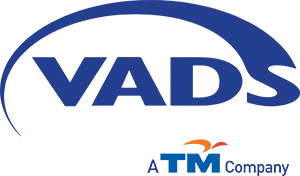Newsroom
- VADS
- Newsroom
- Chatbot vs. Virtual Agent: Which is Best for Your Contact Center?
Chatbot vs. Virtual Agent: Which is Best for Your Contact Center?
29 October 2024

In the rapidly advancing digital age, the need for fast and responsive customer service has become a top priority for many companies. In the world of contact centers, AI offers technologies that enable a more personalized and efficient customer experience. Two commonly used technologies are chatbots and virtual agents. Although they are often considered similar, there are significant differences in their functionalities and roles in enhancing contact center efficiency. In this article, we will explore the differences between chatbots and virtual agents and their roles in improving customer experience (CX).
What is a Chatbot?
A chatbot is an automated AI-based software designed to respond to simple, often repetitive, questions and tasks. Chatbots are usually configured with predefined rules or scripts to respond to customer requests. They are commonly found on websites or apps that offer automated customer service, such as FAQs or product introductions.
Advantages of Chatbots:
-
Quick Responses for Basic Queries
Chatbots excel in providing quick answers to common questions such as operating hours, product information, and order status. -
Reduces Agent Workload
By handling routine inquiries, chatbots free up human agents from basic tasks, allowing them to focus on more complex issues. -
Lower Operational Costs
Chatbots can operate 24/7 without incurring significant additional costs, making them an economical choice for companies seeking to provide round-the-clock customer service. -
Fast and Easy Implementation
Due to their simpler systems, chatbots can be quickly implemented on company websites or apps.
What is a Virtual Agent?
A virtual agent is more advanced AI software than a chatbot, with capabilities for natural language processing (NLP), understanding conversation context, and even recognizing customer emotions. Virtual agents can handle more complex issues with longer conversation flows and can escalate to a human agent if necessary.
Advantages of Virtual Agents:
-
Deeper Understanding of Language and Context
Virtual agents have NLP capabilities that enable them to understand customer requests in natural language, providing more relevant and contextual answers. -
Personalized Customer Service
By collecting customer data during interactions, virtual agents can offer more personalized solutions or recommendations, enhancing the customer experience. -
Ability to Handle Complex Issues
Virtual agents can manage issues that require multiple steps to resolve and can handle longer and more structured conversations. -
Sentiment Analysis for More Empathetic Responses
Advanced virtual agents can recognize customer tones or emotions, such as frustration or happiness, allowing them to respond more empathetically.
Key Differences Between Chatbots and Virtual Agents
Although both are AI tools designed to improve customer experience, there are some key differences between chatbots and virtual agents:
-
Intelligence Level
Chatbots use rule-based logic that is typically limited to simple responses. In contrast, virtual agents have NLP and machine learning capabilities, making them smarter and able to learn from past interactions. -
Personalization Capabilities
Chatbots usually only answer common questions and do not have sufficient customer data access for personalization. Virtual agents, on the other hand, can collect information to tailor their responses, providing a more relevant experience. -
Task Complexity
Chatbots are generally limited to handling simple tasks and cannot manage more complex conversations. Virtual agents are designed to handle more complicated interactions and can provide solutions for multi-step problems. -
Implementation and Maintenance Costs
Since chatbots are simpler, their implementation is faster, and their maintenance costs are lower compared to virtual agents. Virtual agents, which require data processing and NLP, tend to require a larger investment.
Which is Best for Your Contact Center?
Choosing between a chatbot and a virtual agent depends heavily on your business’s specific needs and the type of interactions that frequently occur in your contact center.
-
Use a Chatbot If:
Your company often receives basic, repetitive questions, has budget limitations, or is just beginning to transition to automation technology. Chatbots are ideal for businesses looking to increase efficiency and provide basic customer service without high costs. -
Use a Virtual Agent If:
Your company needs to handle more complex issues and has a high interaction volume that requires more personalized solutions. Virtual agents are suitable for companies focusing on a deeper customer experience, with advanced AI features that support more human-like conversations and accurate responses.
Integrating Both: A Complete AI Solution
Some companies combine chatbots and virtual agents as a complete AI solution. Chatbots can be used to handle initial interactions and basic questions, while virtual agents can manage more complex requests or escalate when necessary. By integrating both, companies can achieve a balance between efficiency and optimal customer service quality.
The use of AI technology, whether through chatbots or virtual agents, plays an essential role in improving contact center efficiency and service quality. PT VADS Indonesia, as a trusted customer service provider, can help your company optimize customer experience through advanced AI Contact Centers. With support from PT VADS Indonesia, your business can deliver more efficient, personalized, and responsive customer interactions. Discuss your needs with us today!
Related News
22 December 2025
12 December 2025
04 December 2025
27 November 2025
20 November 2025
17 November 2025
13 November 2025
10 November 2025
03 November 2025
27 October 2025
23 October 2025
09 October 2025
02 October 2025
29 September 2025
29 September 2025
26 September 2025
26 September 2025
25 September 2025
22 September 2025
18 September 2025
15 September 2025
15 September 2025
11 September 2025
04 September 2025
01 September 2025
28 August 2025
28 August 2025
21 August 2025
19 August 2025
11 August 2025
01 August 2025
30 June 2025
20 June 2025
19 June 2025
27 May 2025
02 May 2025
17 April 2025
14 March 2025
07 March 2025
28 February 2025
18 February 2025
14 February 2025
11 February 2025
07 February 2025
28 January 2025
24 January 2025
21 January 2025
14 January 2025
07 January 2025
02 January 2025
30 December 2024
27 December 2024
17 December 2024
13 December 2024
10 December 2024
06 December 2024
03 December 2024
29 November 2024
19 November 2024
14 November 2024
08 November 2024
05 November 2024
01 November 2024
31 October 2024
25 October 2024
22 October 2024
18 October 2024
16 October 2024
11 October 2024
09 October 2024
08 October 2024
07 October 2024
27 September 2024
24 September 2024
20 September 2024
13 September 2024
10 September 2024
10 September 2024
06 September 2024
04 September 2024
02 September 2024
02 September 2024
09 August 2024
05 August 2024
26 July 2024
23 July 2024
02 July 2024
25 June 2024
18 June 2024
14 June 2024
06 June 2024
31 May 2024
24 May 2024
26 April 2024
02 April 2024
08 March 2024
05 March 2024
01 March 2024
29 February 2024
27 February 2024
23 February 2024
20 February 2024
16 February 2024
13 February 2024
09 February 2024
06 February 2024
02 February 2024
30 January 2024
26 January 2024
23 January 2024
19 January 2024
17 January 2024
12 January 2024
09 January 2024
05 January 2024
04 January 2024
29 December 2023
26 December 2023
20 December 2023
13 December 2023
08 December 2023
05 December 2023
28 November 2023
23 November 2023
17 November 2023
14 November 2023
09 November 2023
08 November 2023
01 November 2023
24 October 2023
17 October 2023
17 October 2023
11 October 2023
10 October 2023
06 October 2023
04 October 2023
29 September 2023
27 September 2023
26 September 2023
22 September 2023
21 September 2023
15 September 2023
08 September 2023
01 September 2023
22 August 2023
18 August 2023
15 August 2023
15 August 2023
04 August 2023
26 July 2023
21 July 2023
04 July 2023
03 July 2023
30 June 2023
09 June 2023
01 June 2023
30 May 2023
26 May 2023
19 May 2023
17 May 2023
12 May 2023
04 April 2023
16 March 2023
09 March 2023
24 February 2023
22 February 2023
14 February 2023
13 February 2023
09 February 2023
31 January 2023
26 January 2023
23 January 2023
19 January 2023
12 January 2023
10 January 2023
06 December 2022
31 August 2022
17 June 2022
09 May 2022
20 April 2022
06 April 2022
01 April 2022
25 February 2022
23 February 2022
21 February 2022
18 February 2022
15 February 2022
11 February 2022
08 February 2022
07 February 2022
04 February 2022
02 February 2022
31 January 2022
17 January 2022
14 January 2022
07 January 2022
03 January 2022
28 December 2021
07 December 2021
01 November 2021
27 October 2021
25 October 2021
18 October 2021
15 October 2021
14 October 2021
21 September 2021
22 April 2021
15 April 2021
13 April 2021
08 April 2021
05 April 2021
26 March 2021
23 March 2021
18 March 2021
15 March 2021
12 March 2021
09 March 2021
04 March 2021
02 March 2021
26 February 2021
23 February 2021
19 February 2021
16 February 2021
11 February 2021
09 February 2021
04 February 2021
02 February 2021
26 January 2021
21 January 2021
19 January 2021
14 January 2021
12 January 2021
07 January 2021
05 January 2021
29 December 2020
17 December 2020
15 December 2020
10 December 2020
08 December 2020
04 December 2020
02 December 2020
18 November 2020
16 November 2020
13 November 2020
11 November 2020
10 November 2020
09 November 2020
06 November 2020
04 November 2020
28 October 2020
23 October 2020
12 October 2020
09 October 2020
06 October 2020
02 October 2020
30 September 2020
23 September 2020
19 September 2020
26 August 2020
22 July 2020
23 April 2020
16 April 2020
09 April 2020
26 March 2020
19 March 2020
12 March 2020
05 March 2020
27 February 2020
20 February 2020
13 February 2020
06 February 2020
